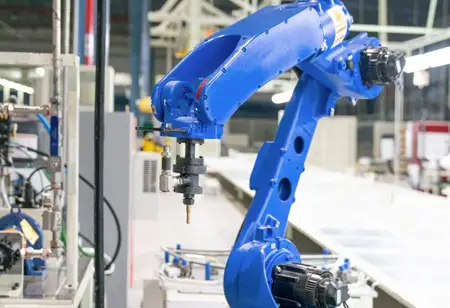THANK YOU FOR SUBSCRIBING
THANK YOU FOR SUBSCRIBING
Be first to read the latest tech news, Industry Leader's Insights, and CIO interviews of medium and large enterprises exclusively from Auto Tech Outlook

By
Auto Tech Outlook | Thursday, December 02, 2021
Stay ahead of the industry with exclusive feature stories on the top companies, expert insights and the latest news delivered straight to your inbox. Subscribe today.
Some industrial intellectuals may already be researching precision agriculture, smart manufacturing, or digital medicine. And these industries, especially automotive, are no strangers to automation technology like AI and machine intelligence.
FREMONT, CA: Robots are now pervasive in the automotive sector, executing even the most complicated manufacturing processes and finishing them at a rate many times faster than human labor. Advanced robotics, in conjunction with automation technologies and learning modules, are doing duties with greater precision than ever before, hence enhancing industrial output. Although many robotics technologies, such as AI or IoT, are still in its infancy, it represents a massive leap forward from what our industries had until the late 1980s. It is nearly impossible to compile an entire list of all the fascinating miracles bursting from the industry's most talented and diligent minds.
Some advanced automation technologies employed in the automotive sector are as follows:
Machine Vision
To justify pricing, automakers utilize machine inspection to make cars safer, more reliable, and more durable. Machine Vision (MV) helps organizations satisfy this need by automating internal machine inspection.
The automobile sector was one of the first to adopt MV for automated inspection, process management, and robot guidance. Technology, software and hardware solutions, integrated systems, and, of course, expertise abound in MV.
This technology employs imaging methods such as conventional, hyperspectral, infrared, line scan, 3D surface, and X-ray imaging.
Intelligent cameras or smart sensors with frame grabbers are used to record or capture images of the surface to be inspected (or a custom interface). Several companies use digital cameras connected to computers through FireWire, USB, or Gigabit Ethernet.
These cameras photograph the surface of the tested car component (say, the body or fins of an engine). Specialized software analyses and processes these pictures, primarily using Finite Element Analysis. MV helps manufacturers cut expenses, rationalize price points, and become formidable competitors.
Driverless/Autonomous Vehicles Using Artificial Intelligence
The definition of an artificial intelligence system is "any system that senses its surroundings and performs actions that maximize its chances of succeeding at some goal." This is also true for driverless, autonomous, or self-driving cars that are in development and employ various levels of artificial intelligence.
Artificial intelligence in automobiles works by first developing and storing an internal map of the surroundings utilizing intelligent sensors such as radar, sonar, or laser.
It then evaluates these data, calculates the most likely course, and delivers commands to the vehicle's actuators, which control acceleration, braking, and steering. Coded driving protocols, obstacle avoidance algorithms, predictive modeling, and intelligent object discrimination (for example, knowing the difference between a bicycle and a motorcycle) assist the automobile in adhering to traffic rules and navigating around obstacles.
See Also: Top Machine Learning Solution Companies
 Copyright © 2025 AutoTech Outlook. All Rights Reserved | Privacy Policy | Subscribe | Sitemap | About us | Feedback Policy | Editorial Policy
Copyright © 2025 AutoTech Outlook. All Rights Reserved | Privacy Policy | Subscribe | Sitemap | About us | Feedback Policy | Editorial Policy 



